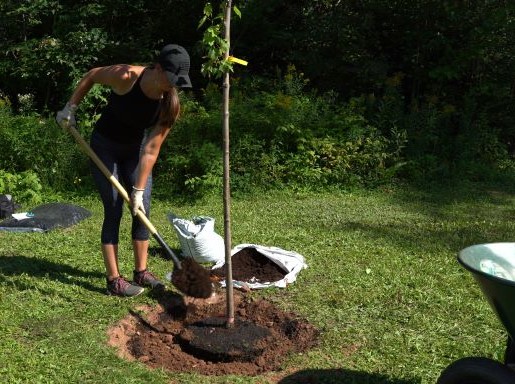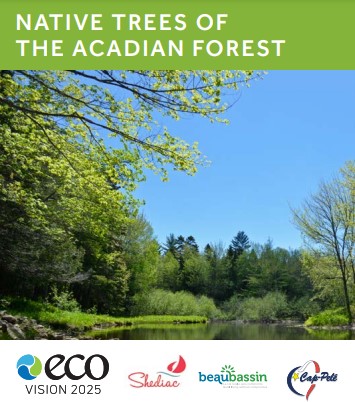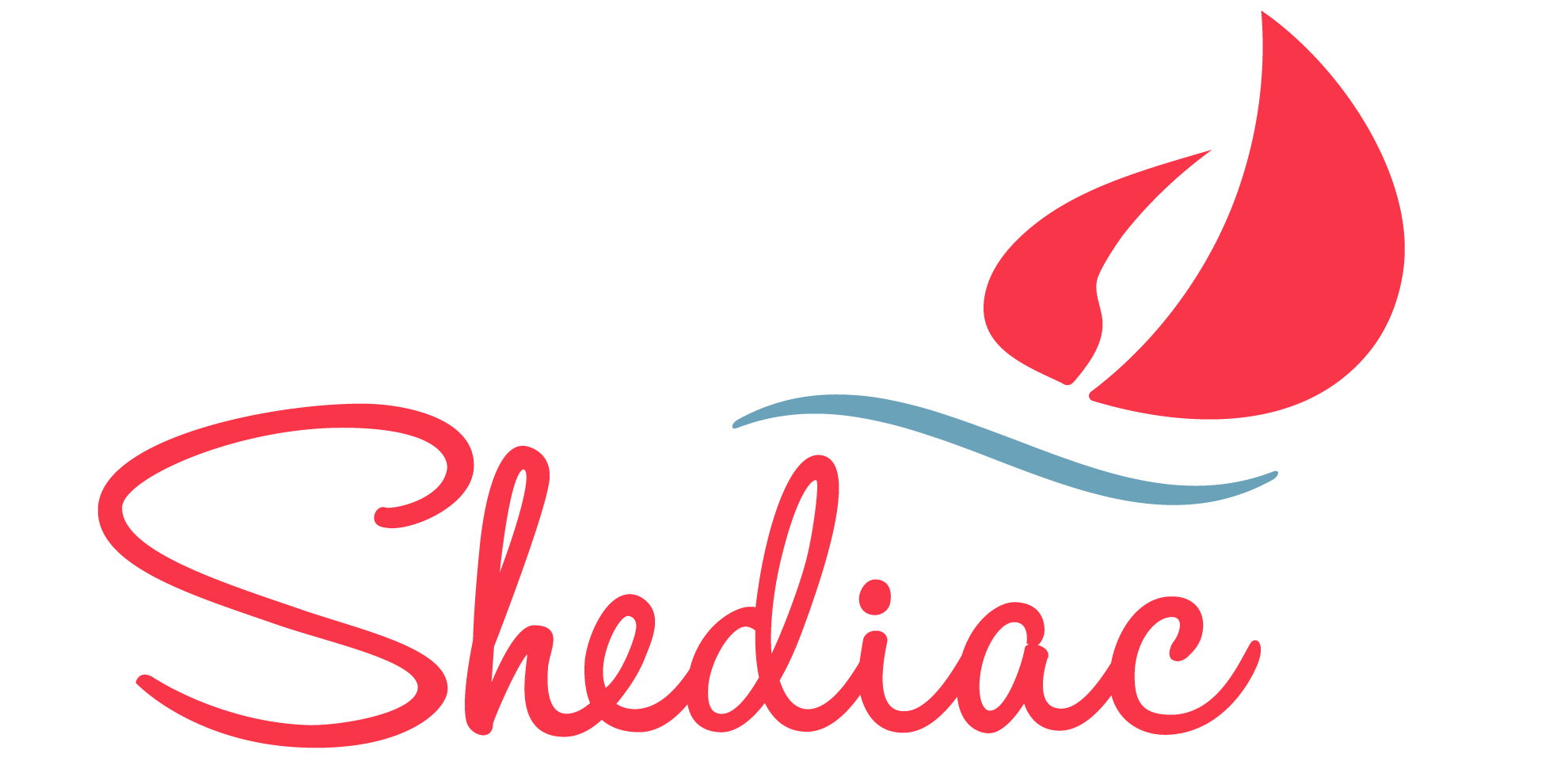Native Trees of the Acadian Forest
What is a Native Tree?
A tree is said to be native if it has populated its region without human intervention. Native trees originally come from the region where they grow. They have been around for a very long time, since our forest began growing over 10,000 years ago, when the glaciers began to melt. The Eastern White Pine, Sugar Maple, Eastern White Cedar and Red Oak are examples of trees native to the Acadian-Wabanaki Forest.
However, several tree species from other parts of the world have colonized our region after being introduced by humans. Some of these species can be harmful to the health of our forest.

Plant Native Trees to Encourage Biodiversity
Planting a tree may seem like a simple act, but it’s not. First of all, the species of tree you choose to plant in your yard will have an impact on the surrounding flora and fauna. Planting a native tree contributes to the quality of the environment in our communities.
A distribution of native trees is organized annually in the fall in both municipalities. Residents can obtain trees for free or purchase them at a very low price and plant them in their yards to increase the biodiversity of our communities.
A booklet has been prepared to help you understand the role that trees native to the Acadian Forest play, by providing you with information on the importance of native trees and many other topics related to the forest in our region. In the last section, we show you how to plant a tree in 10 steps. View booklet PDF
Educational Video Series
A series of 3 educational videos is available here. In the first two, you will learn more about the importance of trees in the Acadian forest for the health of the environment, rivers and biodiversity. The third video shows the proper ways to plant a tree.

This initiative is sponsored by:


